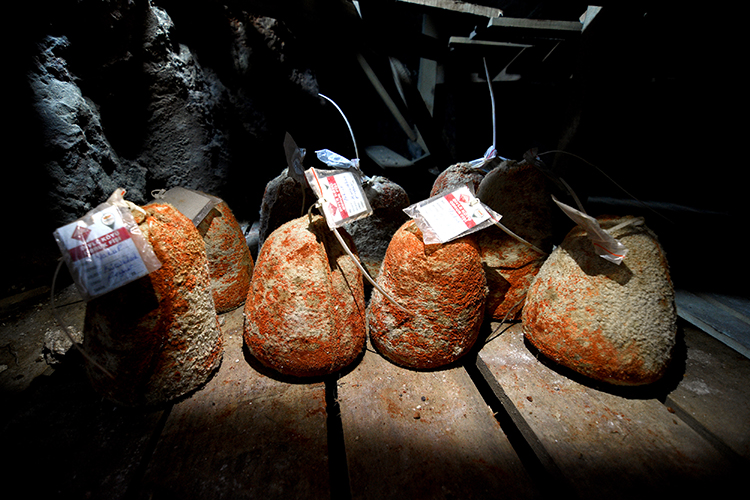According to AA‘s “Türkiye’s Caves” file, the Divle Obruk Cave in Karaman is located in the village of Divle, 16 kilometers from Ayrancı district, and is used for ripening cheeses produced in the region with its unique microflora structure. The cheeses, which are obtained by mixing cow, goat and sheep milk in a certain ratio and pressed on goat and lamb skins, are matured for about 5 months in the Divle Obruk Cave, 1 kilometer east of the village.
The cheeses, which are fermented in June and pressed on goat and lamb skins, are covered with white, blue and red mold over time in the cave with its special flora. The cheeses are ready for consumption in the October-November period when the mold turns brick red.
Ayrancı Mayor Yüksel Büyükkarcı says that the 36 meter deep, 250 meter long Divle Obruk Cave has been used to store provisions for centuries, according to old people.
“One of the most important features of the cave is its flora. The temperature in Divle Obruk Cave is 4-6 degrees in summer and winter. Obruk is a naturally formed cave consisting of a depression. The humidity rate is 90 percent. It is a place where food has been stored since centuries ago.



The fermentation process starts when the cheese obtained from the milk of animals grazing in the pastures is placed in this cave in June. At first, a white mold forms. After a month it turns blue. After the second month, it starts to turn red. After the 5 month process is completed, the cheese is ripe. One of the most important features of the cave is its flora. It has been tried in many places. We could not find the taste of this place in any other cave.”
Divle obruk cheese is a mixture of cow, goat and sheep milk, has a long process of boiling and fermentation, and is pressed on kid and lamb skins. The cheeses pressed on the skins are labeled with a name and placed in the cave. Divle obruk cheese is equivalent to Roquefort, one of the top 5 cheeses in the world.
The capacity of the cave is 43 tons. The cheese has 2 features. The first is the flora structure of the cave, and the second is that it is naturally obtained from the milk of animals grazing in the pasture (obtained from the milk of animals grazing 100 percent in nature without feed). We recommend you to visit if you are on your way.
